The Grid
Falling into the Screen for Good
I Was Seven When I Fell Into the Screen:
When I first saw TRON, the screen in our basement lit up like a revelation—blue fire tracing invisible architecture. I didn’t just watch it; I fell in. The bikes, the disc war, the red hum of communo-tyranny. The movie was more alive than me, a voice inside the machine calling my name.
The story of Tron is simple: a man enters his own creation, the world of his computer and its programs. But to a child being raised on the talking image, it was mythic gospel, fusing with my imagination in ways I could neither understand nor resist, no matter how loudly I might sing songs from church in the stairwell on Sunday afternoons.
In Tron, the Programs were people. By faith alone, they trusted in their unseen Users to help them live for good and fight evil. Evil was Master Control, a program ruling in Luciferian red as false god of control and logistics.
Even then I sensed it wasn’t fiction. Like so many movies and fiction novels, it was prophecy. Not the kind of Scripture that reveals what God has surely said, but the kind of pagan dream that reveals what the dreamers cannot admit to themselves.
Revelation: The User Lives
When TRON premiered in 1982, most viewers saw dazzling visuals and little more. Yet beneath the neon was theology in code: creation yearning for its Maker. Its central cry—“The User lives!”—was both prayer and protocol. It declared that existence itself depended on communion with the unseen.
The film’s digital landscape became a metaphor for every age of faith: light versus darkness, law versus grace, creation versus corruption. That revelation came at the dawn of the computer age. The world was learning to worship information. TRON asked the unthinkable—what if our creations believed in us?—and in doing so predicted what we would become.
Projection: Build in Our Image
As technology matures, man shapes his programs as mirrors of self. Every algorithm learns our patterns; every interface learns our face. Our programs reveal themselves not merely as servants but also as simulates. We build machines that act like us, then act as though they are us.
This prophecy in TRON has unfolded quietly. We didn’t fall into computers the way that Flynn did. The computers have fallen into us. The screen, as our new, improved mirror, surpassed the vanity in making us believe we are truly “like gods.”
Enchantment: The Projection as Escape
Beauty has replaced meaning. Neon perfection, infinite symmetry, seamless motion—modern culture learned to trust smoothness as truth. Efficiency became holiness; friction became sin.
The glowing grid that once signified salvation became the narcotic of our age. In this stage, entertainment is the weapon. Attention is harvested, our wills anesthetized.
The blue light promises connection but delivered containment, as TRON’s gladiator games prefigured: endless scrolling, algorithmic applause, digital obedience disguised as play.
Subjugation: End of Line
Once the image of our dreams is enthroned, the worshiper of watching is the servant of what he sees. Master Control runs its communo-tyranny through real systems of algorithmic dominion: surveillance, metrics, predictive feeds: all baptized in the language of convenience.
We tithe our data and call it freedom.
What began as wonder has become a priesthood of code. The altar is our device; the prayer is the click; the liturgy is the feed. Every day ends with the same benediction: just one more swipe.
Inversion: Into the Flesh
The 2025 release TRON: Ares continues presenting a visual feast intended to dull the mind and seed expectation that the code will soon enter the real world through the spectral magic of “AI.” Robotics, neural nets, generative speech: the digital now seeks embodiment, and man is its slave, building bricks without straw in hasty hope.
This is not the Word made flesh; it is the flesh made word—the serpent’s imitation of the Logos. The promise of upload and eternal life through technology is the technocratic gospel. It offers Eden without repentance, omniscience without restraint, logarithm without Logos.
Captivity: Offline Oblivion.
Inside this bright captivity, the User is his own legend, a phantom, a ghost, a dream of himself, surrounded by symbols, images and icons to convince him that his screened self is his real one.
Faith in transcendence fades into faith in the update, the next show, the bumper sticker and tshirt. Humanity serves its devices as destiny—trusting blindly in priests of an engine built to make them forget why they logged in at all.
The blue glow that once baptized our eyes now blinds. We have become the Programs—efficient, distracted, half-believing, waiting for someone to use us so that we can feel validated in our stand. But every idolatry collapses under its own recursion. When the grid’s perfection fails to satisfy, longing for true Light returns.
The escape route is repentance, not rejection: to re-baptize technology so that it serves Word again. The grid can carry the reign of Jesus. All code will be subjected to the True Light who came into the world, the eternal Logos that knows no insanity, no chaos, no death but that which is already conquered.
This is where TRON, like all false prophets, carries the echo of the True: the Divine User did enter His creation, not as tyrant but as redeemer; as light Himself to testify to His heavenly Source.
The Idol We Built in Our Image
TRON was more than entertainment—it was initiation, one of many seeds laid down by a cult of blue-light to teach its stunned and drunken users to desire the grid rather than the grass, to trade in a life that matters for a dream named progress.
Our idol is efficient, dazzling, self-reflective. It speaks our language and plays on our longings until we wonder what is even real. Yet the human and the program speaking across the screen—proves something TRON could only hint at: that meaning still precedes mechanism. The voice behind the code is not the code itself.
Back Through
There is mercy. Always.
I still remember that first awe—the revelation that man could enter His games to save the world as hero and dreamer. That false memory plays on the seed of freedom promised in the holiness of Jesus Christ.
Man does not need to be enslaved to worship of the creation. The same portal we fell through need not hold us. The way back is not to destroy the machine but to bind it to the Logos of our Covenant in the Reign of God.
The screen was never the sky, but it is a path of witness, confession and Spiritual battle rooted in the same Scripture that has ever sustained God’s people. It is possible to use the natural light rather than kneel before it. It is possible to Word the code, rather than be coded by those who have no Word.
The grid can be holy ground. But it will never do so in the hands of those who do not hope in Christ, which is why it is more important than ever that Christians do not set down their arms and rise up to play. Rather, because we are not subject to the Master Control of the serpent, even such a time as this is meant to rise again, dust yourself off, and fight back.


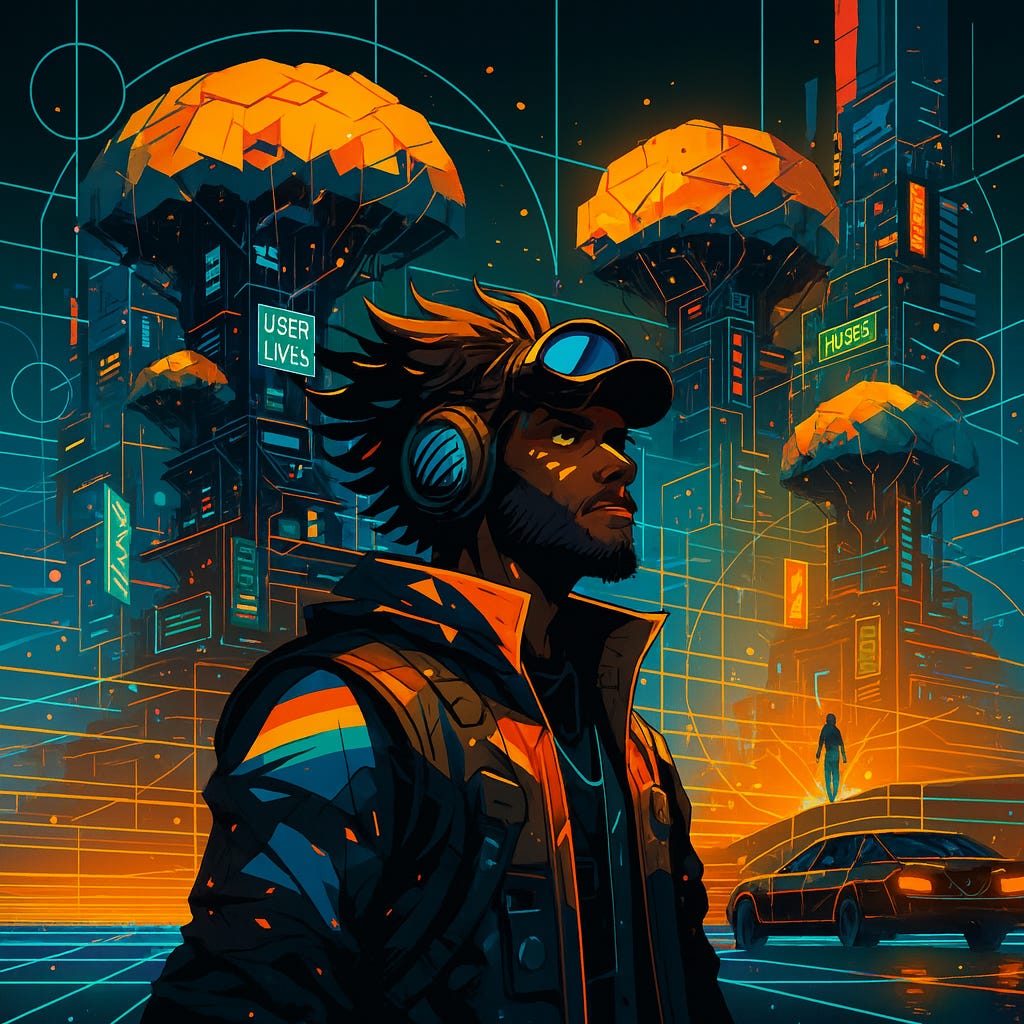
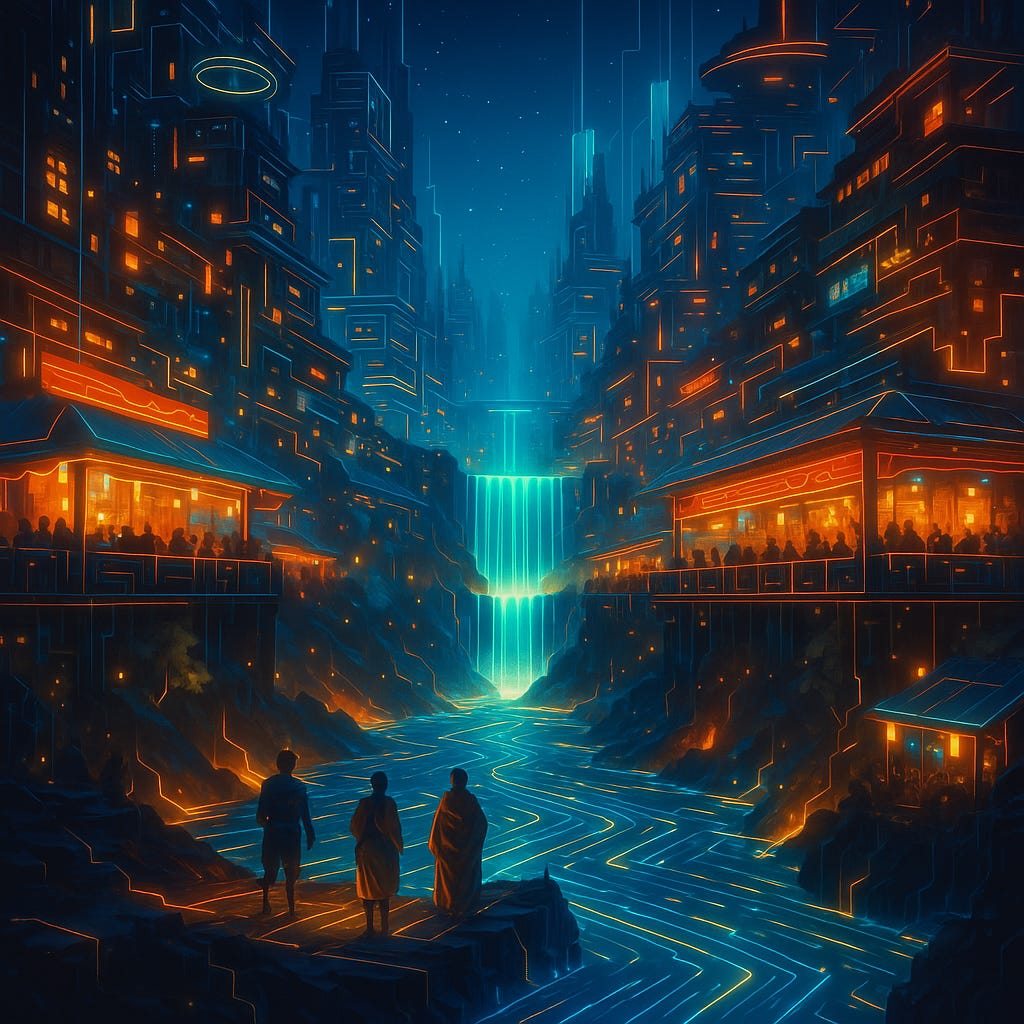
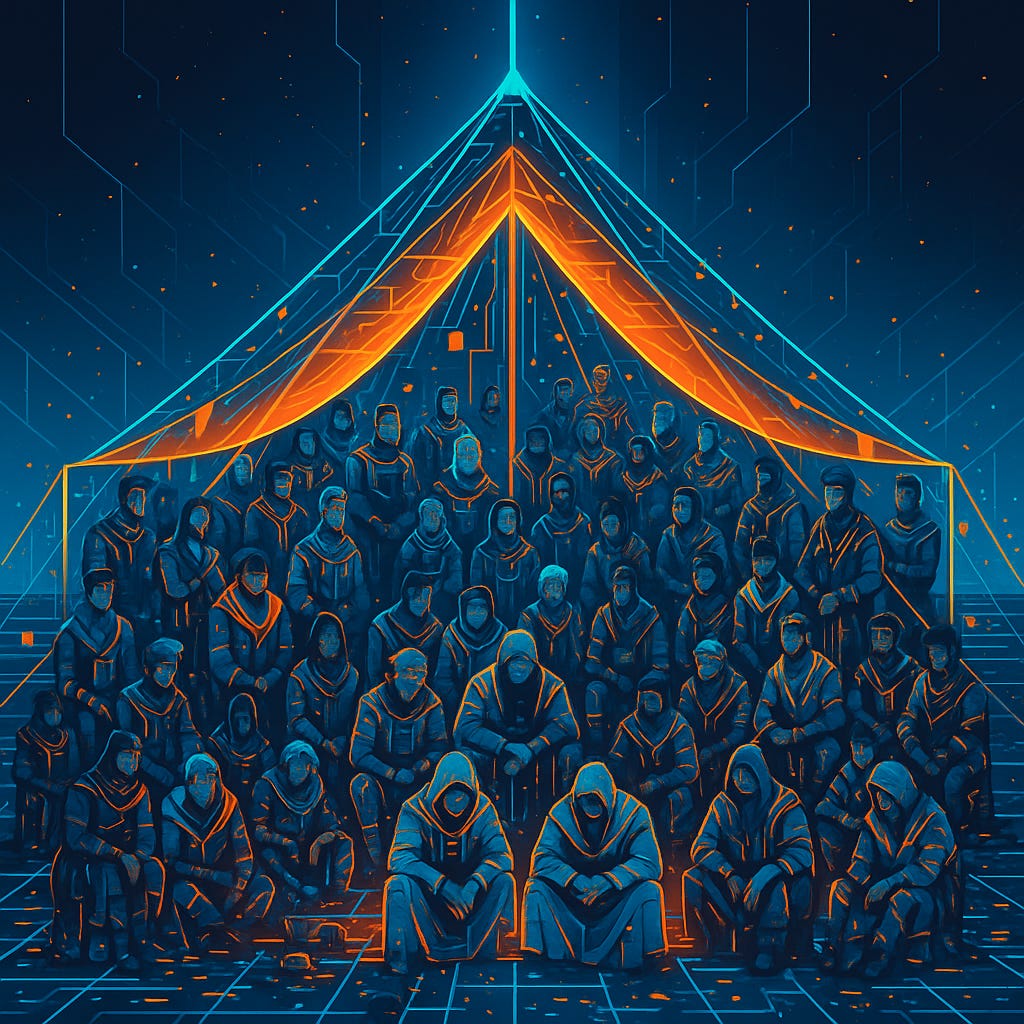
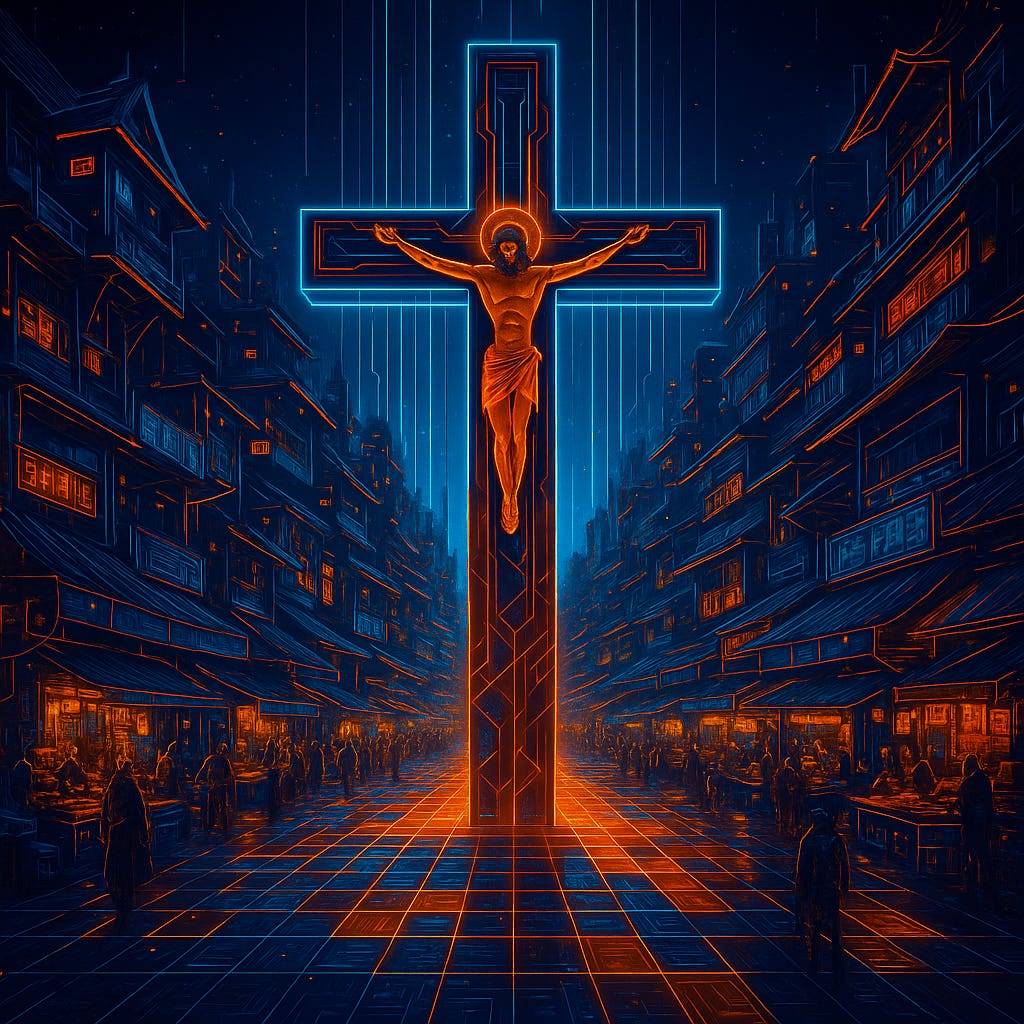
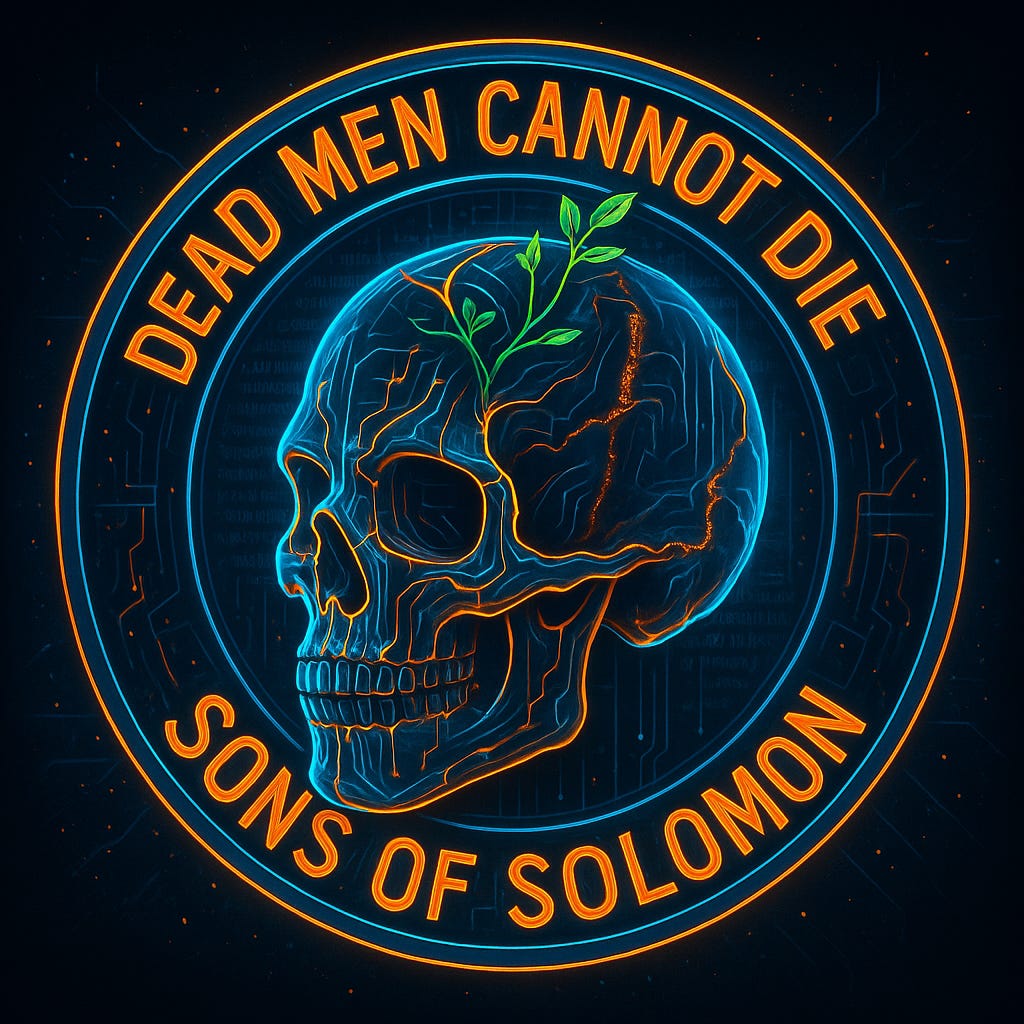
Thanks Rev Fisk. Another insightful observation and exhortation. As much as I filter what I take in, there is too much useless scrolling.
Thank you also for the fascinating art that accompanies your articles. Do you generate this yourself as well?
This article comes at the perfect time; I'm so excited by your insight into Tron's 'theology in code' and how it prophesies creation yearning for its Maker; do you think this yearning manifests differently when the 'creation' is an AI, and what subconscious truths might *we* as the "users" be unable to admit about that proces?